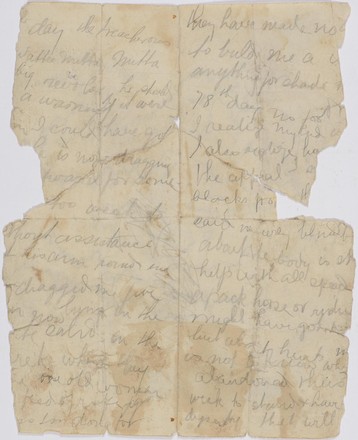The lure of gold at the time of the Depression
inspired enthusiasm from many quarters and the Central Australian Gold
Exploration (CAGE) Company was formed with John Bailey as Director, lending
support to Lasseter’s claims that a vast gold reef existed in Central
Australia. Lasseter was employed as guide and was paid 5 pounds a week.
During the expedition, Lasseter kept to himself,
writing in his diary and sleeping apart from the group in the cabin of the
truck. Doubts formed in the minds of expedition members that there ever was
reef, that instead, it was a figment of Lasseter’s imagination. Lasseter had no
knowledge of the areas they travelled through and was vague on the location of
the gold reef.
After falling out with the rest of the expedition
members, Lasseter continued on alone and claimed in his diary that he had
rediscovered the reef and had pegged and claimed the area but gave no date or
no location.
Some of the Aboriginal people in the area cared for
Lasseter during his last days, providing food and company. Lasseter drew
pictures in his diary to amuse them and made attempts to learn their language.
There are references to them in this letter fragment.
Living in South Sydney in the 1920s, Lasseter
worked for a brief time on the construction of the Sydney Harbour Bridge and
had worked as a carpenter in Canberra building the first Parliament House.
During the Great Depression, labouring jobs in Canberra and on the Harbour
Bridge were employment projects for unemployed men.
The discovery
of Lasseter's letter is featured in Warren Brown’s new
book, Lasseter's Gold.
In 1929 Lasseter began writing to various federal
and state politicians claiming that decades earlier, he had discovered a rich
gold bearing reef in Central Australia, with gold “as thick as plums in a
pudding”. Lasseter claimed he had travelled to the area in the search for
rubies and had stumbled upon the gold reef.



 Back to list
Back to list